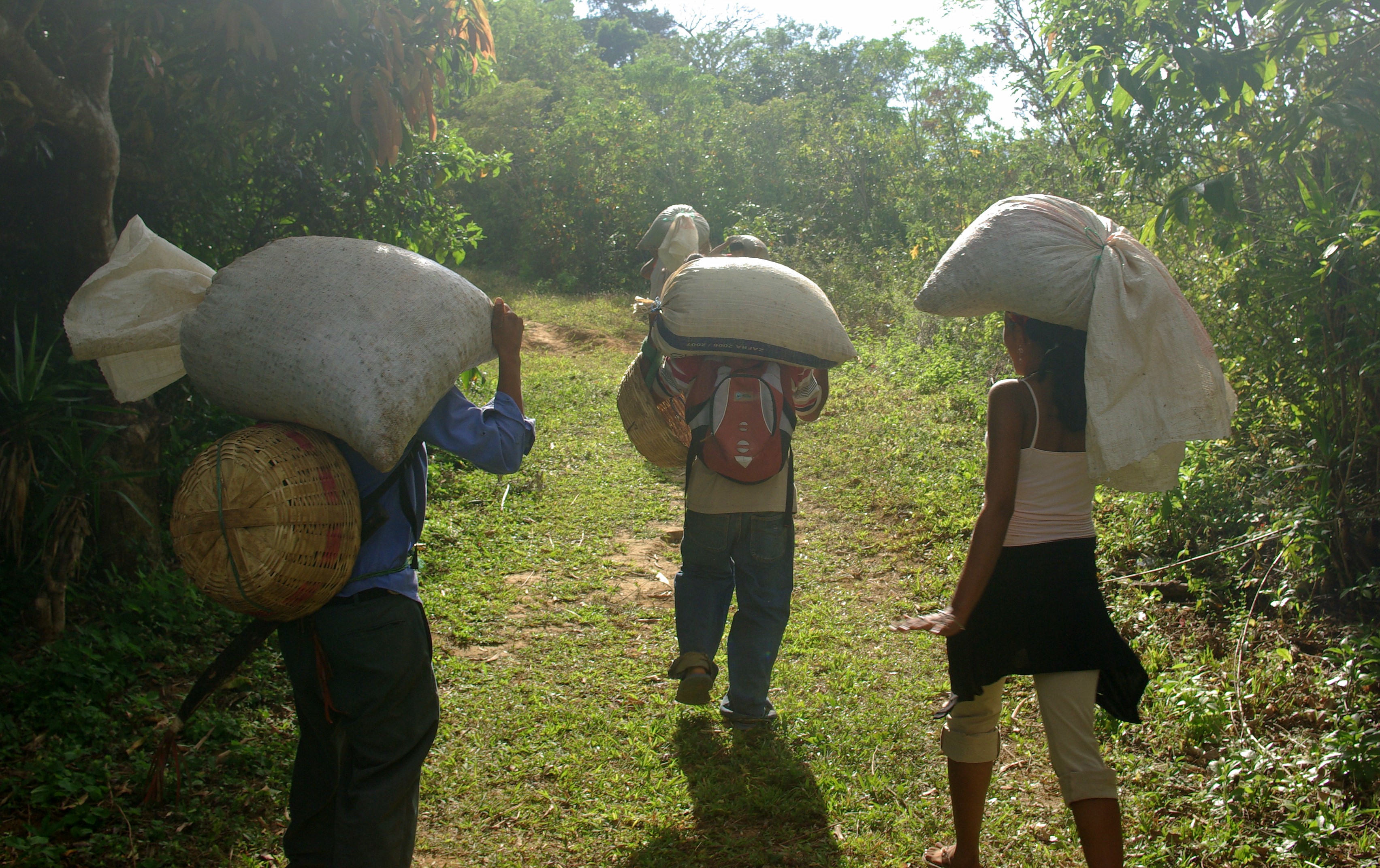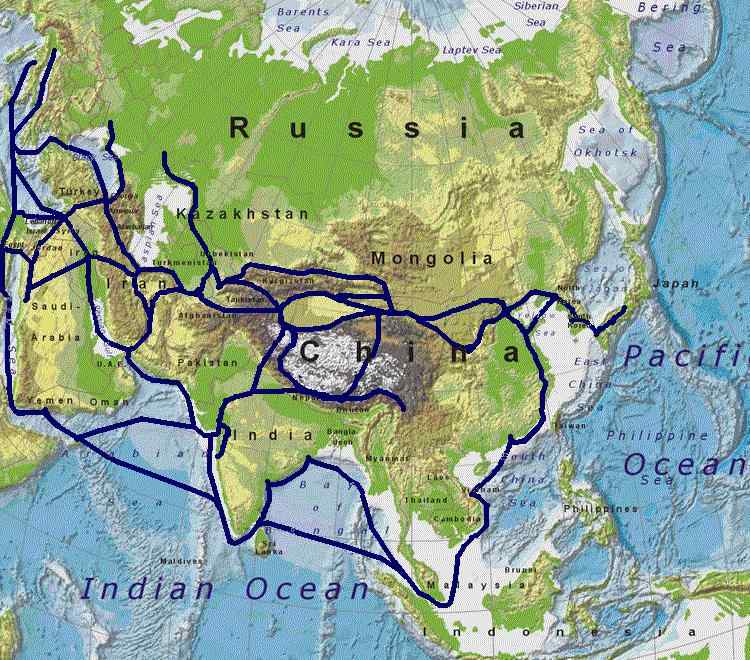|
Global System Of Trade Preferences Among Developing Countries
The Global System of Trade Preferences among Developing Countries (G.S.T.P) is a preferential trade agreement, currently encompassing 42 members ("participants"), signed on 13 April 1988 with the aim of increasing trade between developing countries. It was negotiated within the framework of the United Nations Conference on Trade and Development (UNCTAD). The Agreement entered into force on 19 April 1989 and was notified to the then General Agreement on Tariffs and Trade (GATT), predecessor of the World Trade Organization (WTO), on 25 September 1989. The 42 members of GSTP include 7 LDCs as well (Bangladesh, Benin, Guinea, Mozambique, Myanmar, Sudan, and Tanzania). The Agreement was initiated by UNCTAD to promote trade among developing countries, thereby fostering economic growth and South-South cooperation and has its roots in the Group of 77, a coalition of 134 developing countries created in 1964 to increase their negotiating leverage and promote their economic interest ... [...More Info...] [...Related Items...] OR: [Wikipedia] [Google] [Baidu] |
Preferential Trade Agreement
A preferential trade area (also preferential trade agreement, PTA) is a trading bloc that gives preferential access to certain products from the participating countries. This is done by reducing tariffs but not by abolishing them completely. It is the first stage of economic integration. These tariff preferences have created numerous departures from the normal trade relations principle, namely that World Trade Organization (WTO) members should apply the same tariff to imports from other WTO members. With the recent multiplication of bilateral PTAs and the emergence of Mega-PTAs (wide regional trade agreements such as the Transatlantic Trade and Investment Partnership (TTIP) or Trans Pacific Partnership (TPP)), a global trade system exclusively managed within the framework of the WTO now seems unrealistic and the interactions between trade systems have to be taken into account. The increased complexity of the international trade system generated by the multiplication of PTAs ... [...More Info...] [...Related Items...] OR: [Wikipedia] [Google] [Baidu] |
Non-tariff Measures
Non-tariff barriers to trade (NTBs; also called non-tariff measures, NTMs) are trade barriers that restrict imports or exports of goods or services through measures other than the imposition of tariffs. Such barriers are subject to controversy and debate, as they may comply with international rules on trade yet serve Protectionism, protectionist purposes. Sometimes, uniformly applied rules of trade may be more burdensome to some countries than others, e.g. for countries with developing economies. The Southern African Development Community (SADC) defines a non-tariff barrier as "''any obstacle to international trade that is not an import or export duty. They may take the form of import quotas, subsidies, customs delays, technical barriers, or other systems preventing or trade barrier, impeding trade''". According to the World Trade Organization, non-tariff barriers to trade include import licensing, rules for valuation of goods at customs, pre-shipment inspections, rules of origin ... [...More Info...] [...Related Items...] OR: [Wikipedia] [Google] [Baidu] |
Economic Geography
Economic geography is the subfield of human geography that studies economic activity and factors affecting it. It can also be considered a subfield or method in economics. Economic geography takes a variety of approaches to many different topics, including the location of industries, economies of agglomeration (also known as "linkages"), transportation, international trade, development, real estate, gentrification, ethnic economies, gendered economies, core-periphery theory, the economics of urban form, the relationship between the environment and the economy (tying into a long history of geographers studying culture-environment interaction), and globalization. Theoretical background and influences There are diverse methodological approaches in the field of location theory. Neoclassical location theorists, following in the tradition of Alfred Weber, often concentrate on industrial location and employ quantitative methods. However, since the 1970s, two major reactions ag ... [...More Info...] [...Related Items...] OR: [Wikipedia] [Google] [Baidu] |
Tariffs
A tariff or import tax is a duty imposed by a national government, customs territory, or supranational union on imports of goods and is paid by the importer. Exceptionally, an export tax may be levied on exports of goods or raw materials and is paid by the exporter. Besides being a source of revenue, import duties can also be a form of regulation of foreign trade and policy that burden foreign products to encourage or safeguard domestic industry. Protective tariffs are among the most widely used instruments of protectionism, along with import quotas and export quotas and other non-tariff barriers to trade. Tariffs can be fixed (a constant sum per unit of imported goods or a percentage of the price) or variable (the amount varies according to the price). Tariffs on imports are designed to raise the price of imported goods to discourage consumption. The intention is for citizens to buy local products instead, which, according to supporters, would stimulate their country's econom ... [...More Info...] [...Related Items...] OR: [Wikipedia] [Google] [Baidu] |
Market Access
In international trade, market access refers to a company's ability to enter a foreign market by selling its goods and services in another country. Market access is not the same as free trade, because market access is normally subject to conditions or requirements (such as tariffs or Import quota, quotas), whereas under ideal free trade conditions goods and services can circulate across borders without any Trade barrier, barriers to trade. Expanding market access is therefore often a more achievable goal of trade negotiations than achieving free trade. Market access concessions and limitations to market access differ greatly between trade in goods and trade in services. While market access for goods mainly involves measures at the border such as customs duties or quantitative restrictions, market access for services relates more to the application of domestic regulation behind the border. Moreover, in a world of proliferating regionalism, preferential market access for goods and se ... [...More Info...] [...Related Items...] OR: [Wikipedia] [Google] [Baidu] |
Colombia
Colombia, officially the Republic of Colombia, is a country primarily located in South America with Insular region of Colombia, insular regions in North America. The Colombian mainland is bordered by the Caribbean Sea to the north, Venezuela to the east and northeast, Brazil to the southeast, Peru and Ecuador to the south and southwest, the Pacific Ocean to the west, and Panama to the northwest. Colombia is divided into 32 Departments of Colombia, departments. The Capital District of Bogotá is also the List of cities in Colombia by population, country's largest city hosting the main financial and cultural hub. Other major urban areas include Medellín, Cali, Barranquilla, Cartagena, Colombia, Cartagena, Santa Marta, Cúcuta, Ibagué, Villavicencio and Bucaramanga. It covers an area of 1,141,748 square kilometers (440,831 sq mi) and has a population of around 52 million. Its rich cultural heritage—including language, religion, cuisine, and art—reflects its history as a co ... [...More Info...] [...Related Items...] OR: [Wikipedia] [Google] [Baidu] |
2007 Enlargement Of The European Union
On 1 January 2007, Bulgaria and Romania became member states of the European Union (EU) in the fifth wave of EU enlargement. Bulgaria and Romania did not have a referendum related to European Union accession. Negotiations Romania was the first country of post-communist Europe to have official relations with the European Community. In 1974, a treaty included Romania in the Community's Generalized System of Preferences. Following the Romanian Revolution of 1989, membership of the EC, and its successor the European Union (EU), had been the main goal of every Romanian Government and practically every political party in Romania. Romania signed its Europe Agreement in 1993, and submitted its official application for membership in the EU on 22 June 1995 and Bulgaria submitted its official application for membership in the EU on 14 December 1995. Along with its official EU application, Romania submitted the Snagov Declaration, signed by all fourteen major political parties dec ... [...More Info...] [...Related Items...] OR: [Wikipedia] [Google] [Baidu] |
Romania
Romania is a country located at the crossroads of Central Europe, Central, Eastern Europe, Eastern and Southeast Europe. It borders Ukraine to the north and east, Hungary to the west, Serbia to the southwest, Bulgaria to the south, Moldova to the east, and the Black Sea to the southeast. It has a mainly continental climate, and an area of with a population of 19 million people. Romania is the List of European countries by area, twelfth-largest country in Europe and the List of European Union member states by population, sixth-most populous member state of the European Union. Europe's second-longest river, the Danube, empties into the Danube Delta in the southeast of the country. The Carpathian Mountains cross Romania from the north to the southwest and include Moldoveanu Peak, at an altitude of . Bucharest is the country's Bucharest metropolitan area, largest urban area and Economy of Romania, financial centre. Other major urban centers, urban areas include Cluj-Napoca, Timiș ... [...More Info...] [...Related Items...] OR: [Wikipedia] [Google] [Baidu] |
Socialist Federal Republic Of Yugoslavia
The Socialist Federal Republic of Yugoslavia (commonly abbreviated as SFRY or SFR Yugoslavia), known from 1945 to 1963 as the Federal People's Republic of Yugoslavia, commonly referred to as Socialist Yugoslavia or simply Yugoslavia, was a country in Central Europe, Central and Southeast Europe. It was established in 1945, following World War II, and lasted until 1992, breakup of Yugoslavia, dissolving amid the onset of the Yugoslav Wars. Spanning an area of in the Balkans, Yugoslavia was bordered by the Adriatic Sea and Italy to the west, Austria and Hungarian People's Republic, Hungary to the north, People's Republic of Bulgaria, Bulgaria and Socialist Republic of Romania, Romania to the east, and People's Socialist Republic of Albania, Albania and Greece to the south. It was a One-party state, one-party socialist state and federation governed by the League of Communists of Yugoslavia, and had six constituent republics: Socialist Republic of Bosnia and Herzegovina, Bosnia and Her ... [...More Info...] [...Related Items...] OR: [Wikipedia] [Google] [Baidu] |
MERCOSUR
The Southern Common Market (commonly known by abbreviation ''Mercosur'' in Spanish and ''Mercosul'' in Portuguese) is a South American trade bloc established by the Treaty of Asunción in 1991 and Protocol of Ouro Preto in 1994. Its full members are Argentina, Bolivia, Brazil, Paraguay, and Uruguay. Venezuela is a full member but has been suspended since 1 December 2016. Chile, Colombia, Ecuador, Guyana, Panama, Peru, and Suriname are associate countries. Mercosur's origins are linked to the discussions for the constitution of a regional economic market for Latin America, which go back to the treaty that established the Latin American Free Trade Association in 1960, which was succeeded by the Latin American Integration Association in the 1980s. At the time, Argentina and Brazil made progress in the matter, signing the Iguaçu Declaration (1985), which established a bilateral commission, which was followed by a series of trade agreements the following year. The Integration, ... [...More Info...] [...Related Items...] OR: [Wikipedia] [Google] [Baidu] |
Protocol On Trade Negotiations
The Protocol on Trade Negotiations (PTN) is a preferential trade agreement signed on 9 December 1971 with the aim of increasing trade between developing countries in the framework of the General Agreement on Tariffs and Trade. Its entry into force was on 11 February 1973 and its notification to the WTO on 9 November 1971. Signatories Original signatories currently applying the agreement are: Bangladesh, Brazil, Chile, Egypt, Israel, South Korea, Mexico, Pakistan, Paraguay, Peru, Philippines, Serbia,Agreement signed by the former Socialist Federal Republic of Yugoslavia. Tunisia, Turkey, Uruguay. Former signatories are: Greece (from 9 December 1971 until 1980), India (from 9 December 1971), Romania (from 9 December 1971 until 2006), Spain (from 9 December 1971 until 1985 The year 1985 was designated as the International Youth Year by the United Nations. Events January * January 1 ** The Internet's Domain Name System is created. ** Greenland withdraws from the European ... [...More Info...] [...Related Items...] OR: [Wikipedia] [Google] [Baidu] |



